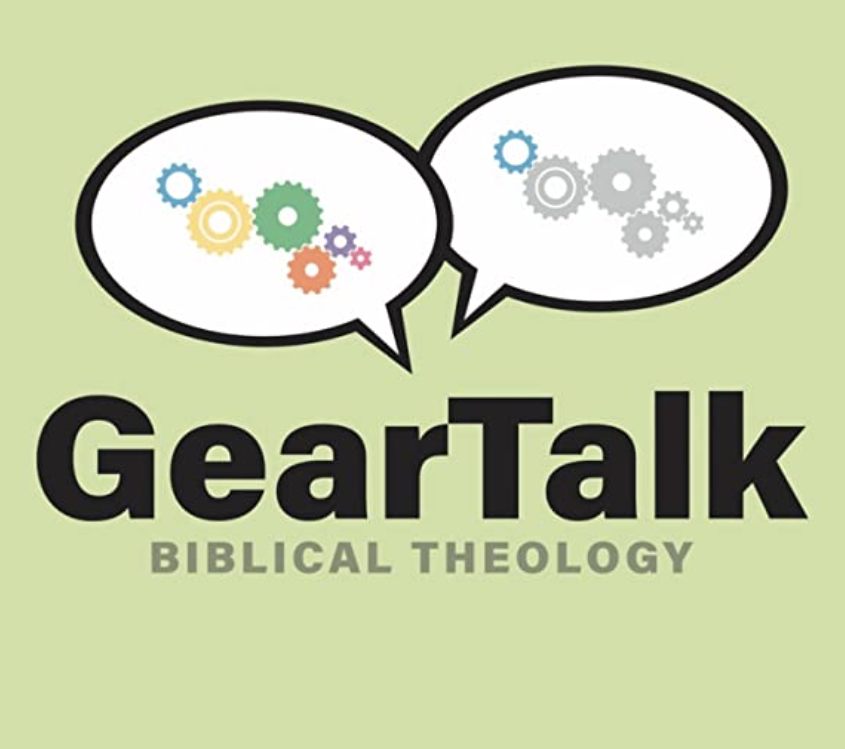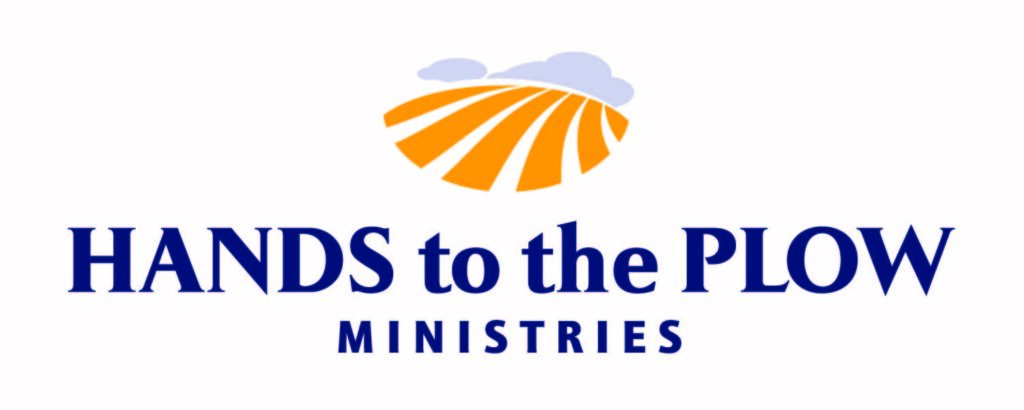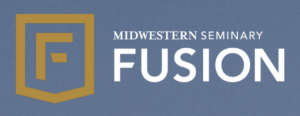Introducing the GearTalk Bible Reading Plan
Introducing the GearTalk Bible Reading Plan
Transcript
JY: Welcome to GearTalk, a podcast on biblical theology. We have a big announcement today—we’re launching the brand new GearTalk Bible reading plan. This goes through a reading in all three sections of the Old Testament each day, plus one reading in the New Testament. I mentioned this was new. It is, but as you’re about to hear, it’s a bit more complicated than that. We developed this Bible reading plan based on Jason DeRouchie’s Kingdom Bible Reading Plan. That means it’s old and new at the same time. Today, Tom Kelby and Jason DeRouchie talk about the plan and why Jason developed it. If you can, while you’re listening, go to handstotheplow.org and register for the new study.
TK: Welcome to GearTalk. It’s me and the roosters and Jason DeRouchie.
JD: Yes. Here I am. And the roosters—they’re a bonus.
TK: Nice. I was just asking if it’s only theirs or where they live, and he said, no—the neighbors have them too. So we can’t— that was the neighbor, wasn’t it?
JD: I don’t know which that was. We actually got a new set of chicks, thought they were all female, and out comes a rooster. So he’s now part of the batch—thirteen chickens.
TK: Alright. Alright. Well, this is gonna be fun. Jason, we’re gonna be talking about something this morning—your Kingdom Bible Reading Plan, which is being changed slightly for use with your phone or your computer, and we’re gonna talk about that. But it’s something that I think—for me—I don’t think you ever told me about it. I think I discovered it, and I felt like I found a friend when I found it.
JD: That’s sweet.
TK: So you came up with this Bible reading plan. Can you kind of explain what your Bible reading plan is, where it came from, and what your intent was in it?
JD: Yeah. So I called it the Kingdom Bible Reading Plan because at the heart of Jesus’ message is proclaiming the gospel of the kingdom. And he is realizing in his life all that the Old Testament was hoping for—a day when the king would finally show up and make all things right. And so, from beginning to end, the gospel is promised and then realized throughout Scripture. And so that captures the overarching message of the Bible, I think. And so I named the Bible reading plan after that.
It really developed early in my academic ministry teaching at a Christian college and wanting my students to be able to initially have a plan that would lead them through the Old Testament in the arrangement that Jesus envisioned it. We see in a passage like Luke 24 that Jesus says, “All that was written in the law of Moses and the Prophets and the Psalms must be fulfilled.” The law of Moses, the Prophets, and Psalms—a three-part canon. In the last two sections joined together, at times the whole testament is just called the Law and the Prophets. But we see in Luke 24, witness to what we see outside the Bible in Jesus’ day and before, that often the Jews talked about a three-part Old Testament, with the Psalms standing as the most major book at the head of the third division. Yet we today, our English Bibles are in a different arrangement
TK: More chronological.
JD: Yeah. More chronological.
And so simply grouping all of the history books together, then the poetic and wisdom books together, and then finally the prophetic books. And yet Jesus’ Bible actually has the Old Testament and the New Testament framed with the story. So the Old Testament, as Jesus envisioned it, begins with the law just like our Bible does—with the story from creation all the way up to Israel’s readiness to enter the land. Then the story picks up again right away in what is called the former prophets—the early prophetic books—which are all narrative.
TK: And I wouldn’t find that in my Bible. Like, if I opened it, I’m not gonna find something that says “Former Prophets” over a particular book.
JD: That’s right. It is simply going to probably just say history books, if anything. And we’re talking about Joshua, Judges, Samuel, Kings. They’re called prophetic because they not only include prophets in their story but these are sermons—prophetic sermons in story form. They’re designed to teach and instruct, and that was the role of the prophet. We see then this movement from creation, which begins in the region of Mesopotamia—the Garden of Eden in that region—where major powers like Assyria, Babylon, and Persia were. And then by the end of the first part of the story, we’re back in Babylon where the exile has happened. Israel has been kicked out of their land.
Then in Jesus’ Bible, the story pauses at the end of the former prophets. We get an entire grouping of commentary books. So we’ve got two different types of books: the story books—the narrative books—telling a true story of what happened in world history.
TK: And those are generally, wouldn’t you say, for a lot of us, easier to read? Like, we read about David went here, did this, and we can track the flow of it.
JD: Sure. We’re just seeing a major event happen and then the response to that event.
TK: Right.
JD: And the story just develops chronologically. But that story pauses after Israel gets kicked out of Jerusalem—after Jerusalem falls by the power of Babylon as agents of God’s judgment. Kings ends with Israel going into exile. I wanted students to be able to read the story in that order, but in Jesus’ Bible, a book like Chronicles doesn’t show up directly after Kings—it’s actually the last book in Jesus’ Old Testament, and it carries a very different message. So I wanted my students to be able to read the Bible in the arrangement that Jesus and Paul were envisioning when they talked about their Scriptures: Law, then Prophets—Former Prophets, Latter Prophets.
So then the commentary section begins with Jeremiah as a major prophet, and we move from Jeremiah, Ezekiel, Isaiah, and then the twelve minor prophets. And right away, that’s a different order than we have in our English Bibles. Our English Bibles, well, most of the prophetic books, we still try to put in chronological order, but that’s not the way they got lined up in the sequence most ancient that we find testified to in the days of Christ.
These commentary books are reflecting on the story itself—what the prophets themselves were saying during the story period. So we hear from Jeremiah, Ezekiel, Isaiah, and then the twelve smaller prophets. Then the prophetic unit is over, and we move into the Writings, the last major section of Jesus’ Bible. The Writings also have a former and latter.
The former section continues the commentary unit, and we move from Ruth—which is a very small book, doesn’t show up in the story portion—so it has a different function in Jesus’ Bible. It’s introducing us to the messianic hope—the hope for the coming Christ, the royal deliverer.
TK: And it’s preparing us for the rest of the Writings.
JD: It’s preparing us exactly for how to read the rest of the Writings as first poetry designed to heighten hope for the coming Messiah.
And then the latter Writings begin with Daniel, then move to Esther, Ezra, Nehemiah, and then cap up with Chronicles—all designed to heighten hope for the Messiah’s coming. So these former Writings—Ruth, Psalms, Job, Proverbs, Ecclesiastes, Song of Songs, Lamentations—are the songs that were being sung, the poetry that was being written by this very small remnant of faithful people who were hoping in the coming king. They give us a lens for understanding how they were hoping, how they were believing, how they were living and called to live as parents and married couples in the midst of deep suffering, chaos, and brokenness that showed how dark the days were, heightening our hope in the coming Redeemer.
Then the story picks up again—and this is how Jesus’ Bible ends—in the latter Writings right where the story had dropped off. So it got us up to the exile and the destruction of Jerusalem and Babylon. Lamentations transitions us back to remembering the destruction of Jerusalem and the exile. Then Daniel picks up in exile. The story continues with God preserving the remnant in Esther, God returning that remnant to the land in Ezra and Nehemiah, and then Chronicles as the capstone volume—a very positive book. The first word in Chronicles is Adam. It ends with the decree of Cyrus that people can return to the land. Isaiah had told us that once we see Cyrus come, the agent of return to the land, the one we’re expecting next is the servant who’s going to bring reconciliation with God. And that transitions us then to the book of Matthew, which opens with, “These are the generations,” or the genealogy of Jesus the Messiah, the son of David, the son of Abraham. He is the anticipated king, the servant of Isaiah who would suffer and bring the kingdom of God into being.
As we enter the New Testament, there’s a similar structure to the Old. It begins with narrative in the Gospels, and the new covenant is established there. Then we move into Acts, paralleling the former prophets. But where in Joshua through Kings the story was negative, now with the rise of the church, it’s a positive story in the book of Acts—the rise of the kingdom of God. It’s working in the church as the Spirit of the resurrected Christ is bringing the kingdom of God to earth. After Acts ends, we pause for some commentary books—all the letters that are given to us, paralleling the latter prophets and the former Writings, reflecting on the story, teaching as the church was rising, and the kingdom was advancing. Then you come to the end of the New Testament in a prophetic narrative: Revelation is the capstone. It celebrates the end of the story which will last forever. The work God has done in the church will give rise to the return of the King, the defeat of the enemy, and the celebration and consummate satisfaction of the bride of the Lamb in the presence of the great King—the Lamb seated on the throne.
I wanted to give my students—this was birthed in a context where I wanted to give my students an opportunity to read the Scriptures through that lens. And so the Kingdom Bible Reading Plan was birthed. Every day, there is a reading from the law, a reading from the Writings, a reading from the prophets—law, prophets, Writings—and a reading from the New Testament.
TK: That might seem odd because you’d say, wait a minute, the New Testament has Jesus in it. The New Testament has all these letters in it. Why are you seemingly deprioritizing something so important to us?
JD: That wasn’t at all my goal. I simply wanted to shape whole-Bible people. Paul stressed to the Ephesian elders in Acts 20 the absolute need to declare the whole counsel of God—the purposes of God from creation to consummation as disclosed to us through his book. I wanted to give equal weight to each major section of the Scriptures.
The Law, the Prophets, and the Writings are almost each the same size, and each of those divisions are almost identical in size to the New Testament whole itself.
TK: Seventy-five percent
JD: 75.5 percent, in fact—of our Bible is the Old Testament, and the last quarter is the New Testament. So I created a Bible reading plan that would give equal weight, equal reading time, to each quarter of our Christian Scripture.
TK: It’s—like I said, I’ve used this so much, and you had it. It’s actually printed in some of your books, which is so helpful. A drawback of it is, you print a paper copy of it, you put it in your Bible, and it falls out or it does whatever.
Something that we’ve done is—Mark Yeager has really led a great effort to make this available as an online resource—a GearTalk Bible reading plan based on your Kingdom Bible Reading Plan—where every day you log in and it tracks your progress.
JD: Yeah. It’s really cool. You can track your progress. You know where you’ve read, you know if you’re behind, and what you need to do to catch up. One thing built into the plan though, Jason, is that it only covers twenty-five days a month.
TK: I actually love that fact of the plan.
JD: It was intended just to know that life gets full or we may want to have several days during the month where we do something else—maybe practice Bible memory; on Sundays, when we gather for worship, we may do something different; maybe you’ve got a prioritized family worship time supplementing normal daily personal devotions. However it is, the plan itself is only twenty-five days, leaving you, on most months, five or six days free. So if you’d only get the reading, it’s set up so you could do four different readings per day—one reading, usually one chapter, from the law; one from the prophets; one from the Writings; and one from the New Testament. In an entire year, you read the entire Bible one time, and Psalms you read through twice, because the law portion—Genesis, Exodus, Leviticus, Numbers, Deuteronomy—is a little bit shorter than the rest of the sections, so I allowed us to read the Psalms one extra time mixed in through our reading of the law.
TK: So I might be reading Numbers, and then all of a sudden get three Psalms in a row—three days in a row.
JD: That’s right. Three days of Psalms, then you’re back in Numbers again.
TK: For me, a huge benefit of this GearTalk Bible reading plan is it’s a little different than, say, reading a book that’s talking about the sections of the Bible. Every day, I’m seeing it play out in front of me. It’s pushing the story of the Bible into my life in a different way, and I like that. The way Mark has laid it out here, you actually see it graphically portrayed every day—like, okay, I’m in this section, I know where I am in the Scriptures. It’s kind of cementing something in your mind.
JD: Adding to that, the works that Hands to the Plow and jasonderouchie.com have produced are incorporated into the readings. So every day, at the bottom, there is some snippet from one of our Developing Leaders Curriculum guides or from a preacher’s guide or from one of the books that I have written, resources drawn from some of the lecture notes I have—and they’re added into the Bible reading plan to supplement your reading and help give some guidance as to lasting relevance and the importance of whatever section you’re working through that day.
TK: Something we’re hoping to do is tie this podcast also into readings that we’re doing—to talk about certain books in the schedule at the same time. I think that will be great.
JD: So, for example, if in the next month and a half you’re working through 1–2 Samuel, which is part of the reading, then hopefully we can engage a scholar who has been working in those books and could give us added reflection and insight.
TK: Right. Well, Jason, I am grateful personally for this. It’s blessed my life. It’s really fun to launch this. So we’re at a conference down in Kansas City at your school, and today and tomorrow are really the official launch of this. People can go to our website, handstotheplow.org, and you’ll see a GearTalk Bible reading plan logo you can click on, register, and I would just say check it out. I believe you will be blessed by this plan as I have been blessed.
JD: I praise the Lord for that. We want to see people get into the book. It’s through the book that we encounter our God. Scripture alone brings rebirth. We are born again through the living and abiding Word of God. Scripture alone gives us holiness. Jesus said, “Sanctify them by the truth; your word is truth.” This world is so broken, so hard, and we need the word to fuel our pursuit of God, our purity, our delight in him. It’s only through the word that we’ll be sustained. We need a daily diet of God’s Word.
I think about how Paul said to Timothy that “All Scripture is breathed out by God and is useful for teaching, rebuking, correcting, training in righteousness, so that the man of God may be thoroughly equipped.” This isn’t just a one-time meal; we need the meal every single day. It’s our prayer that people will be drinking in the well that never runs dry through the Scriptures so ultimately they might always be satisfied:
Incline our hearts to your testimonies and not to selfish gain. Open our eyes that we may behold wonderful things from your law. Unite our hearts to fear your name. Satisfy us this morning with your steadfast love, that we may rejoice and be glad all our days. Our souls are satisfied through the word as we encounter the living God. That’s our prayer for our people as we move ahead with this GearTalk Bible reading plan.
TK: Amen. One final note: you will find on there an audio version of the text for the day, which is really nice. So let’s say you have a morning or a time during the day when you think, “Wow, I wasn’t able to do what I wanted, but I have to drive ahead of me.” It’s a nice feature. I’ve greatly appreciated it.
JD: If you’re in a season where your eyes aren’t working, you can click in, and we’re grateful to Crossway for allowing us to reproduce that ESV Bible app right on our website, giving the opportunity to have that audio available.
TK: Amen. Well, Jason, do you want to pray for us as readers of God’s word as we encounter it?
JD: Lord, we are grateful that you have spoken in a way we can truly understand. Thank you that you reign and that you, as the reigning God, save and satisfy every sinner who believes through Christ’s life, death, and resurrection. I pray that this good news would be seared into our souls—that it would not only save us from sin’s penalty but that we would increasingly be saved from sin’s power as we hope in the day when we will be saved completely from sin’s presence. I thank you that your wrath is abated through the precious gift of Christ. I pray our souls would increasingly be satisfied in all that you are for us in Jesus. Let your word be living and active, and may this reading plan serve souls for the sake of your name and for our good. Through Jesus we pray. Amen.
TK: Amen. Alright, Jason. Thanks so much.
JD: Thank you, Tom.
JY: Thank you for joining us for GearTalk. To register for the GearTalk Bible reading plan, go to handstotheplow.org—you’re gonna love it. For other resources related to biblical theology, visit handstotheplow.org and jasonderouchie.com. To support the work of Hands to the Plow, visit handstotheplow.org.






